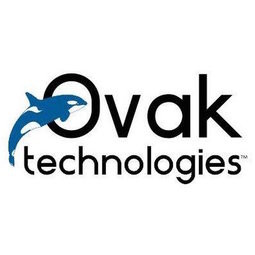下载PDF
Cluster Pumping Station Automation of Oil and Gas Reservoir Pressure Maintenance

技术
- 分析与建模 - 实时分析
- 基础设施即服务 (IaaS) - 其他
适用行业
- 石油和天然气
适用功能
- 流程制造
用例
- 机器状态监测
挑战
开发用于远程控制、监控和保护泵站设备的储层压力维护自动化系统。
客户
未公开
关于客户
管理集群泵站 (CPS) 的石油和天然气行业客户。
解决方案
将 NI CompactRIO FPGA 和处理器的优势与各种 I/O 模块相结合,创建一个坚固的监控系统,以不同的速率记录多种数据格式,同步数据,与至少六种类型的第三方系统进行通信,具有 96 个或更多设备每个系统,并执行实时分析以远程监控 10 种类型的传感器(每个系统至少 42 个传感器)以延长持续时间。用户友好的应用程序是使用 NI LabVIEW 系统设计软件开发的,它有助于在安装前为特定站的适当设备和传感器配置每个自动化系统
收集的数据
Device Diagnostic Status, Number Of Connected Devices, Pressure
运营影响
相关案例.

Case Study
Taking Oil and Gas Exploration to the Next Level
DownUnder GeoSolutions (DUG) wanted to increase computing performance by 5 to 10 times to improve seismic processing. The solution must build on current architecture software investments without sacrificing existing software and scale computing without scaling IT infrastructure costs.

Case Study
Remote Wellhead Monitoring
Each wellhead was equipped with various sensors and meters that needed to be monitored and controlled from a central HMI, often miles away from the assets in the field. Redundant solar and wind generators were installed at each wellhead to support the electrical needs of the pumpstations, temperature meters, cameras, and cellular modules. In addition to asset management and remote control capabilities, data logging for remote surveillance and alarm notifications was a key demand from the customer. Terra Ferma’s solution needed to be power efficient, reliable, and capable of supporting high-bandwidth data-feeds. They needed a multi-link cellular connection to a central server that sustained reliable and redundant monitoring and control of flow meters, temperature sensors, power supply, and event-logging; including video and image files. This open-standard network needed to interface with the existing SCADA and proprietary network management software.

Case Study
Refinery Saves Over $700,000 with Smart Wireless
One of the largest petroleum refineries in the world is equipped to refine various types of crude oil and manufacture various grades of fuel from motor gasoline to Aviation Turbine Fuel. Due to wear and tear, eight hydrogen valves in each refinery were leaking, and each cost $1800 per ton of hydrogen vented. The plant also had leakage on nearly 30 flare control hydrocarbon valves. The refinery wanted a continuous, online monitoring system that could catch leaks early, minimize hydrogen and hydrocarbon production losses, and improve safety for maintenance.








